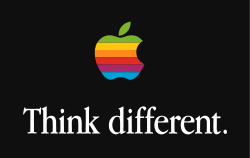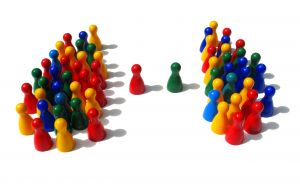Which is why it’s used to sell us a plethora of products. Everything from scary movies to hand sanitizers to political candidates. From 2009-2012, Publishers Weekly‘s annual list of best-seling books averaged a staggering 12 of its Top 15 best-sellers that fit into the “Thriller” category. Take Stephen King. Even though he’s not the household name he once was, King’s new offerings like Dr. Sleep are still snapped up by the hundreds of thousands and he has sold more than 500 million copies of his novels to date. Very scary. Still not convinced? Just look at the runaway success of TV shows like Dexter, CSI, Bones, and reality shows like Fear Factor and Ghost Hunters. The show that terrifies me? “Here Comes Honey Boo Boo”, but that’s another article. What neuroscientists and marketers know is that there’s a solid biological basis behind our attraction to fear. Fear raises our adrenaline, creating the primal, fight-or-flight response. This in turn releases epinephrine, a hormone and neurotransmitter that produces a deeply satisfying rush. Just ask any adrenaline junkie. According to Yerkes National Primate Research Center neuroscientist Kerry Ressler, the amygdala, our brain’s fear center, “Gets just as activated by fear as it would in the real world, but because your cortex knows you’re not really in danger, that spillover is rewarding and not frightening.” Fear also brings us together by uniting us against a common enemy. It’s why we take such perverse pleasure in spreading fearful rumors, sometimes blowing them out of proportion to heighten the sense of danger. It’s why many urban legends still persist (highway murder gangs, alligators in the sewers) and why even a simple power outage can have neighbors calling each other with theories about terrorist attacks or government-sponsored “men in black” squads.Wacky, yes, but an article on political fear-mongering from the left-leaning web site Daily Kos, states that “When a threat is perceived, the body goes into automatic mode, redirecting blood to certain parts of the body and away from the brain. The respiratory response also decreases the blood supply to the brain, making a person unable to think clearly. In other words, the loss of blood to a person’s brain can make him or her stupid, literally.” An academic study in Communication Monographs by Kim White entitled “The Extended Parallel Process Model” explains that “People who are exposed to fear appeals think carefully about the responses posed in these messages, then follow the advice of the persuasive message in an attempt to neutralize the danger.”
Fear is a powerful persuader, so it’s no surprise that marketers, advertisers and political consultants look for ways to exploit our fears to the fullest. In the coming weeks we’ll explore some of the ways our minds are subtly manipulated so that we’re driven to purchase. I don’t mean to scare you, but it happens every day. |




